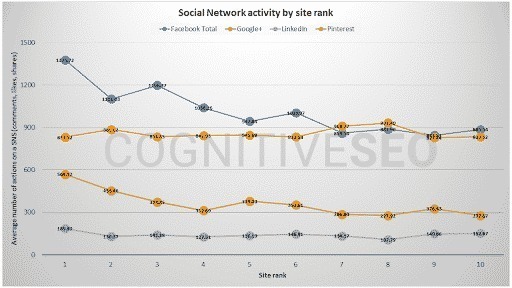After putting up a website, you’re facing the task of optimizing your pages for search engines. At this point, you’ve probably learned the basics, if not all the fundamentals, of SEO.
However, you hit another stumbling block. Social SEO. You’re not quite sure of it. Is it a separate discipline from normal SEO services? And what’s all this ruckus about Google saying once that social signals are part of their algorithm, then years after, taking it back? And now, articles on the internet tell you not to abandon social SEO.
Isn’t that a bit confusing?
Yes, to be fair, it can be. In fact, most of the things we do as an SEO company can be. But lend us your eyes here on this article because we’re going to cover everything you need about social SEO.
What is Social SEO?
We started to shift our attention to social SEO when, back in 2010, Danny Sullivan suggested that social signals are part of Google’s ranking factors. After it circulated in the community, it was brought to the attention of Matt Cutts, who then confirmed it’s true. According to him, Google at that time was also looking into using the reputation or authority of creators as a signal for the search engine rankings.

Fast forward in 2014, there were still a lot more questions on a subject and in Cutts’ Webmasters video, he elaborated on the relationship between social signals and Google search rankings. According to the former head of Google’s webspam team, Google treats social media pages just like other pages on the web. It crawls them by following the same algorithm used in indexing web pages.
However, he pointed out issues on identity, blocked pages, nofollow links, and others that limit the capabilities of Google to index these pages. In other words, just because the content is up and running on social media sites, doesn’t mean Google is able to access it. Furthermore, he emphasized the fact that Google currently doesn’t have the means to take social metrics such as likes and the number of followers as ranking factors.
But despite this, evidence showed that social signals can, in fact, affect page rankings. Let’s take a look at them.
CognitiveSEO, fortunately for us, conducted an extensive study on 23 million social media shares to find out whether or not social signals impact search. And just as you may have guessed, they found out that the more active the post is on major social networks, the higher its chance to rank within the first pages of search engine results.

Aside from featuring a number of social media sites, they also looked into other variables such as the length of the post.
To help you learn more about Organic SEO, here is a compilation guide about this business game-changer.
Go Deeper: More Resources on SEO:
- What Is SEO
- What does SEO Stand For
- What is Social SEO
- The Ultimate Guide To Organic SEO
- The Top Local Search Ranking Factor
- Technical SEO & How it Affects Your Website’s Rankings
- How Does SEO Work for Your Business
- SEO vs. SEM: Tapping Your Business Potential
- White Hat SEO vs. Black Hat SEO: Are You Doing SEO Correctly?
- Easy Guide to Getting Local SEO to Work for Your Small Businesses
- Small Business SEO: Are You Optimizing the Right Way?
- The Importance of NLP (Natural Language Processing) What It Means For SEO
- The On-page SEO Checklist
- Keyword Research Mastery: The Beginners Guide
- The Ultimate Google Algorithmic Penalty Recovery Guide
- Questions you SHOULD Ask Before Hiring an SEO Expert
- The 5 Step Beginner Guide to SEO Writing That Rank
What Social Signals are Relevant to SERP rankings?
Even if it’s hard to fully understand Google’s algorithm that of other search engines, we now have reason to believe that social is important in web rankings. So what are the social signals you should look out for?
Engagement
We’re all familiar with social media sites’ analytics features and how they give us a glimpse of how well our post is doing. For example, Facebook and Twitter pages have Insights and Analytics, respectively. There you will know how many clicks the post has garnered, how far it reached, how many users proceeded to click your profile and so many more.

The higher your posts’ engagement is, the more likely search engines will recognize it as relevant for the topic it’s targeting. This includes likes and reacts, retweets and favorites, upvotes (and downvotes), comments, repins, shares, mentions, and so many others.
Reputation or authority of the person sharing
Even if Google specifically expressed that it can’t examine this kind of metric, it’s safe to assume that it has a tad of influence. After all, one of the things we learned from SEO is the importance of quality backlinks. If the people sharing your content on social media sites are popular, search engines might receive this as a good signal that boosts your site’s authority. This is where quality plays with quantity.
What are the things you can do to improve your social SEO?
You optimize your content for increased traffic. There are specifics on what you should do on on-page and off-page SEO. However, it’s quite different from social. Here are some of the things you should do for your campaign.
Provide as much information as you can
Social media profiles often display things about the business or organization such as contact information, about or description section, and many others. The last thing you want is to overlook these aspects of social SEO.
You’d want to be as descriptive as possible. On top of providing useful information to your audience, not forgetting to incorporate keywords related to your niche will also get you far. Put yourself in your target audience’s shoes and think of the phrases they will likely use. Put that in your description. Provide and update your address. Show them how they can reach you. The more information you provide to your audience, the more value you add to your social media page, and consequently, to your website.
Go outside of Facebook, Twitter, and Instagram
These two are among the largest social media networks out there. However, they’re not everything. There’s Pinterest, Google+, LinkedIn, Reddit, Snapchat, Quora, Flickr, and so many others that are gaining traction over the years. This is where you’d find more audience.
Create shareable content
It’s easy to create an article, have it indexed by search engines, and share the URL on social media sites. What’s a bit tricky is the part where you convince your audience to share them. As far as users are concerned, there are two kinds of content: one they can share with their followers and one that encourages them to scroll down.

What should you do to not end up as the latter? First, make sure that it catches their attention. Second, make sure that it’s interesting enough that they’d want to talk about it. This may not be easy but it is among the tenets of digital marketing: to get to know your target market and to create content that suits their profile.
Interact with your audience
Our main topic is social engagement. You’re not here just to create content, you’re also here to socialize. This is not only a great avenue to keep the post alive, but it’s also an effective way to reach out to your market, promulgating brand awareness and encouraging loyalty. Be active in responding to their comments. If they have questions, don’t take too long to answer. You want your followers to feel that behind the brand, there’s someone they can relate with.
So there you go. We’ve covered a bit of social SEO’s history, its scope and definition, and how you can utilize it to improve your website’s rank in SERPs. Always remember: social is important. Don’t make the mistake of neglecting it.
